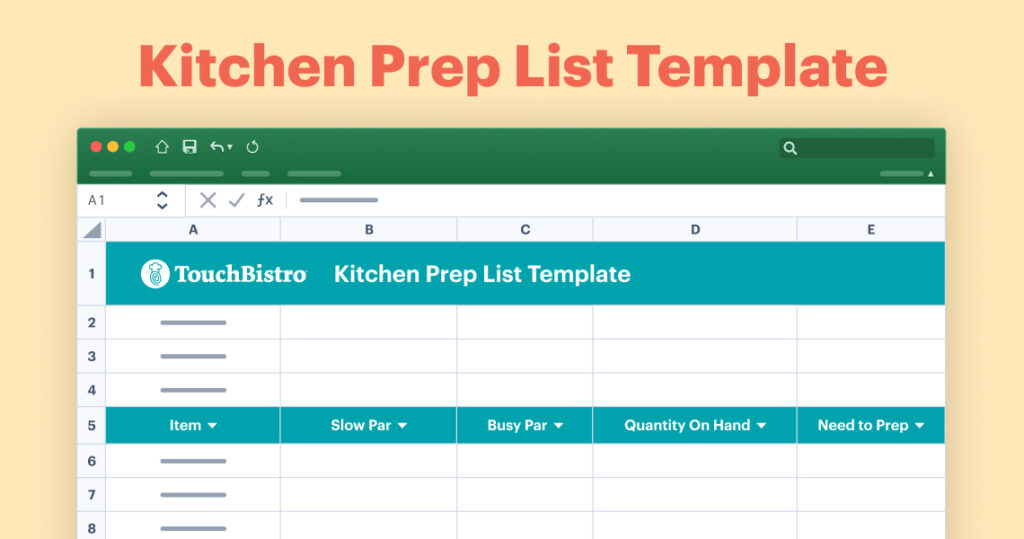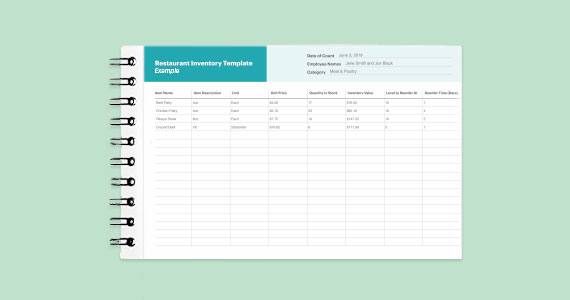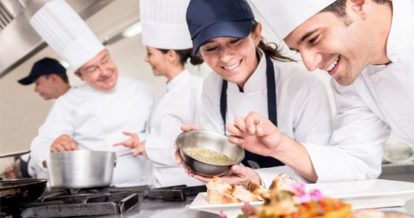Picture yourself giving a live performance: you only get one shot to impress your audience. You’ve rehearsed day and night for weeks, obsessing over every detail. You’ve broken down each part and practiced each move until you’ve made sure you’re ready for a perfect performance on opening night.
That’s what running a kitchen is like. In my 20+ years of working and teaching in acclaimed fine dining restaurants, I’ve stressed the importance of preparation, teamwork, and imagination to achieve a restaurant’s ultimate goal: happy customers. You only get one shot to please them, so your kitchen game needs to be on point.
But efficient kitchens don’t materialize out of thin air – great chefs have thoughtfully constructed and reconstructed every aspect of their operations to maximize efficiency for quick and high-quality service. Here are six top chef behaviors that you and your kitchen should be emulating to turn your restaurant into an award-winning establishment.
They’re Obsessed with Kitchen Layout
Optimizing kitchen layout can be like putting together a giant puzzle with hundreds of pieces. Every piece of equipment and every tool in your kitchen should live in a place where it’s maximizing the efficiency of your staff. This can also include your kitchen technology, such as your kitchen display system and bump bar.
What do I mean by this? Well, start by visualizing some common kitchen processes. Picture every hand involved in the making of every dish, and then picture the plate traveling across the line as each chef adds their component. How does every piece move to create the best meal in the fastest amount of time?
For instance, your cooks likely use and clean a lot of pots, pans, and bowls during prep. Those items should be close to the dishwasher so your staff aren’t wasting time running to the other side of the kitchen to put them away. You also wouldn’t place a big pot of boiling pasta water next to the deep fryer, because you probably want to avoid burning your staff. Your salad station wouldn’t be placed in front of the oven, because the greens would wilt and your salads wouldn’t stay fresh.
Walk through each process in your kitchen and note any bumps in the road, no matter how big or small. Sometimes the smallest changes to your kitchen layout can add up to save a lot of time you would never have otherwise thought about.

Use this kitchen prep list template to ensure all necessary prep is completed prior to service.
They’re Master Menu Hackers
If you’re using an ingredient in only one recipe, you’re likely throwing away a lot of money.
I once worked at a restaurant that used yuzu, a Japanese citrus juice, in one of their dishes. Yuzu is very expensive, and a one-litre bottle can cost $40. The dish that contained yuzu wasn’t a big seller, so we almost always had to throw away half the bottle – meaning we were throwing away $20 every month.
I’m not saying you need to work the same ten ingredients into every dish on the menu, but make sure to track your inventory so that you’re not literally throwing money away. You can always incorporate an ingredient into more than one recipe, or feature daily specials that use items that would otherwise go to waste. For example, the trim on your expensive beef tenderloin doesn’t have to be garbage – grind it up and make burgers or meatballs, or make a stir fry out of what you’ve trimmed off. Bonus: that extra meal you created is almost all profit. You’ve already paid for the protein, and now you’re just paying for the vegetables or the garlic. You can charge $20 for an item that costs you $3 to make!
They’re Great Teachers
Kitchens don’t need to be chaotic places. One of my favorite restaurants has an open kitchen, and I’ve always admired its serenity – every cook on the line is focused solely on the task at hand, working in complete silence. It was obvious to me that everyone knew their role so well and had prepped so thoroughly that they had set themselves up for a smooth and serene dinner service.
Kitchens like this are created by great teachers who are great communicators – especially when it comes to restaurant lingo and complex culinary terms. Top chefs teach new hires how to sharpen their skills while setting clear expectations of roles and behaviors in their kitchen. Top chefs are assertive about keeping their team unified, by communicating what does and doesn’t fly. They give recognition where it’s due, but when something goes wrong, they take the time to analyze why and work with their staff to prevent the mistake.
Great chefs understand that taking the time to teach and impart wisdom. From the pre-shift meeting to end-of-day duties, great chefs know to be on the lookout for opportunities to share knowledge, which ultimately makes for a stronger kitchen in the long run.
They Gamify Their Kitchen
When I was young and just starting out as a chef, I worked at a restaurant that held an event called the “Restaurant Olympics”. The entire restaurant became a playground, and we all competed against each other to see who could perform tasks the fastest or finish with the highest quality dish. The games were a way to blow off steam and interact with each other without a lot of pressure, but they also sharpened our skills and showed us how efficient we could be if we were given clear goals to meet.
Top chefs are great at offering their staff fun challenges with incentives to be more efficient. One day they may challenge one of their cooks to make a 30-minute meal in 25 minutes, and reward them with extra breaks in the time they’ve saved. The next day they’ll knock the time down even more, maybe to 20 minutes. This gamification incentivizes cooks to think very specifically about what they need to do to shave five minutes off their time. They can start to learn small tricks, like using a kitchen prep list template to organize and prepare ingredients the night before or learning a more logical order for their prep to minimize the washing of equipment.
In the restaurant industry every second counts – every second is one that could be saved. When you turn efficiency into a game, your staff will be much more likely to learn their own tricks and teach others.
They’re Pro Inventory Trackers
What’s a cook’s #1 pet peeve? When the head chef forgets to order an ingredient they desperately need.
Let’s say you need to make a cheesecake, and your head chef forgot to order cream cheese. This cheesecake needs to exist regardless of what’s in your fridge, so you need to go out and get your ingredients. Depending on how much time you have, you either buy a whole cheesecake or some cream cheese from a grocery store, and you end up paying full retail price. You’ve just spent way more money than necessary, and you’ve wasted 15 minutes or more of your time getting what you need.
Top chefs avoid this scenario. They know exactly what’s in their fridge at all times, and they’ve mastered the art of ordering enough so they don’t run out but not so much that they end up with waste. They know the value of using technology to track and predict what their staff will need, so that the ordering process is seamless and efficient.

Simplify your inventory counts with our free restaurant inventory template.
They Have Family Meals
Finally, the family meal: a staple of any healthy kitchen. Family meals come in all varieties. You can ask your staff to sit back and relax while a meal is made for them for a change, or you can make the process more collaborative by asking everyone to prepare their favorite dish for the group. No matter how you choose to structure, it’s so important to make the time to enjoy food together. The family meal is a time to bond over your shared passion for food and chat about why you all love the restaurant industry to begin with.
When you emulate the habits of greats, you’re more likely to become one yourself. Implement even just two or three of these best practices into your kitchen operations and restaurant maintenance routine, and you’ll be on your way to creating the well-oiled machine your customers and employees deserve.
Download your free employee handbook template
Sign up for our free weekly TouchBistro Newsletter







